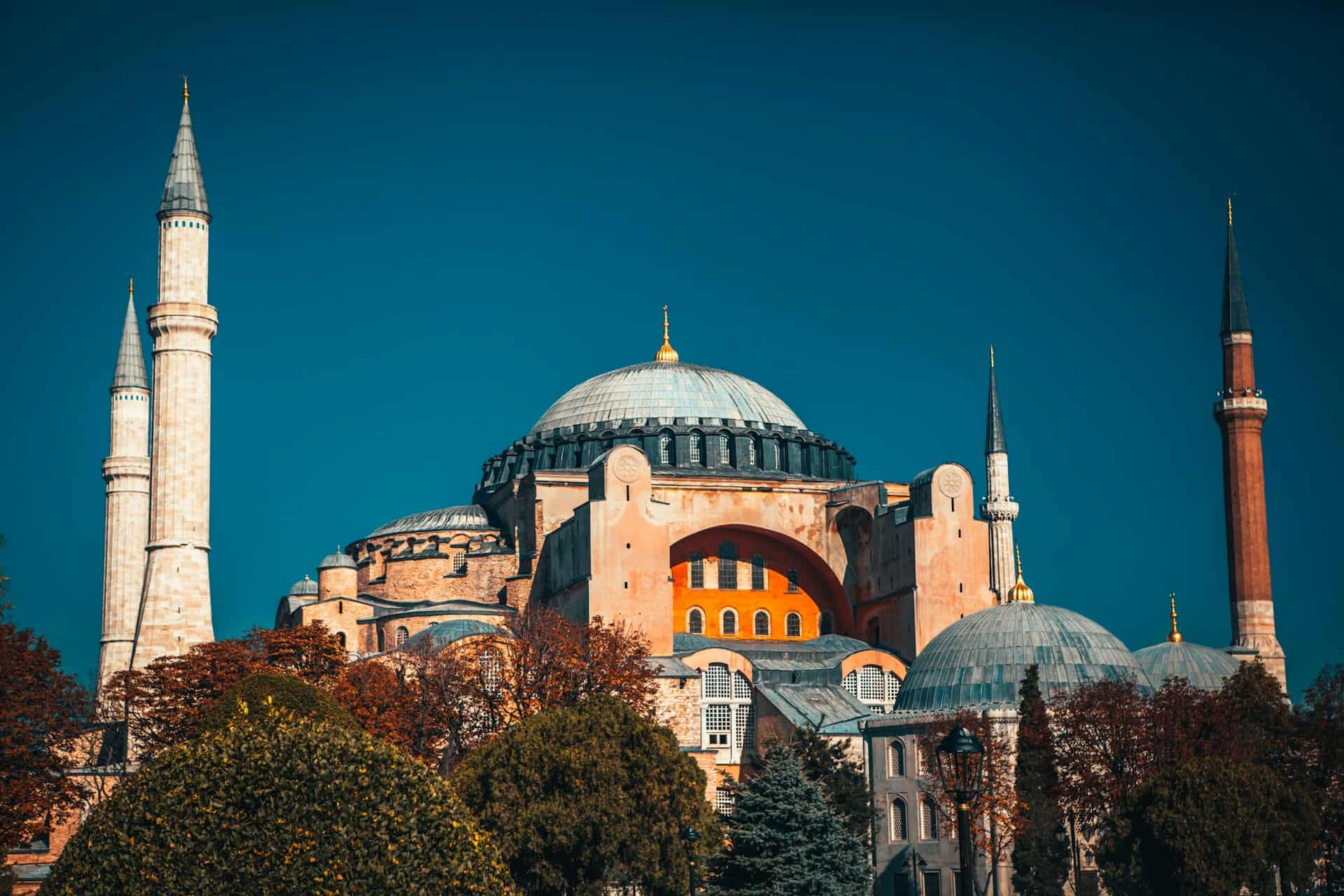Table of Contents
A Visionary's Dream - Justinianus the Builder
The Hagia Sophia, a Byzantine masterpiece and a global icon, has worn many hats over its storied existence. For 916 years, it echoed hymns as a church, resonated with the calls to prayer for 482 years as a mosque, and has now stood in contemplative silence as a museum for over 82 years—a testament to its adaptive spirit.
The origins of this venerable structure trace back to 325, attributed to the visionary Constantine the Great. Born from the remnants of a pagan temple, the original cathedral rose from the ashes of a fire in 404, only to be reconstructed under the watchful gaze of Theodosius II. Its saga faced another fiery chapter during the Nika Rebellion of 532, leaving it in ruins once more
Between 532 and 537, a phoenix emerged from the ashes—the current Hagia Sophia. Emperor Justinian, with a vision as grand as the dome that graced his creation, orchestrated its resurrection. The architects entrusted with this monumental task were no mere craftsmen but revered professors of geometry, Anthemius of Tralles and Isidoros of Miletus.
The great dome, a celestial crown above Hagia Sophia, endured the dance of collapse and rebirth. Shattered by an earthquake in 557, it rose again under the hands of Isidoros the Younger. Yet, the passage of time brought more tests—partial collapses echoed in 989 and 1346. Each collapse became a canvas for reconstruction, a testament to the enduring spirit of this architectural titan.
Time of Conquest
In 1453, the Fall of Constantinople marked a pivotal moment as Sultan Mehmet, the Conqueror, draped Hagia Sophia in a new identity. The Christian mosaics, once vibrant, were veiled, and the structure transformed into the first imperial mosque—an emblem of Ottoman triumph. Every Ottoman sultan that followed left their indelible mark, adorning the mosque with intricate Turkish calligraphy art.

Tombs of Ottoman Legacy The echoes of Ottoman reign linger within Hagia Sophia’s walls, where tombs of illustrious sultans tell stories of power and legacy. Ottoman Selim II’s resting place boasts an octagonal mausoleum, a testament to the grandeur of imperial burials. Mehmed III, whose rule was marked by a complex tale of familial strife, lies beneath the domes of an octagonal layout. The tombs further include Murad III, his daughter, four sons, Ibrahim, and Sultan Mustafa I—a silent testament to the passage of time and the empire’s enduring imprint.
Mosque to museum
In 1935, a new chapter unfolded as Mustafa Kemal Ataturk declared Hagia Sophia an official museum, a move reflecting the evolving ethos of modern Turkey. However, on July 10, 2020, a seismic shift occurred as the Turkish government decreed its transformation back into a mosque. This decision, laden with controversy, sparked debates about the delicate balance between secular principles and cultural preservation.
A Controversial Symphony The conversion ushered in a new era as the Hagia Sophia grand mosque embraced a fresh role in the city’s tapestry. Carpets replaced bare floors, and the call to prayer echoed through its revered walls. Yet, the decision stirred international debates, with concerns about the preservation of its cultural and historical essence echoing across borders.
Open Doors Amidst Controversy Despite its new role, the Hagia Sophia grand mosque still welcomes visitors outside of prayer times. The interplay of history and modernity extends to virtual realms, where online tours offer a glimpse into the mesmerizing mosaic of the mosque’s architectural and cultural heritage.
Conclusion: A Living Legacy
As you step into the Hagia Sophia, may you feel the layers of history beneath your feet—the conquests, the artistry, the controversies. It stands not merely as a mosque or museum but as a living legacy, where each transformation is a brushstroke on the canvas of time.
Join us on a journey through Istanbul’s cultural kaleidoscope at suntrapturkey.com, where the Hagia Sophia’s story continues to unfold in every echoing whisper and shimmer of light.
Q: Is there a dress code for visiting Hagia Sophia Grand Mosque?
A: Yes, there is. Visitors are kindly requested to cover their upper arms and legs. Women are encouraged to wear a headscarf, and it’s customary to remove shoes in the narthex before entering the prayer hall.
Q: Are tours available at Hagia Sophia?
A: Absolutely! Official tour guides can be hired at the entrance. They typically charge by the hour and offer in-depth insights into the rich history of Hagia Sophia.
Q: What is the best time to visit Hagia Sophia?
A: The most popular time to visit is between 9 am and 11:30 am. However, non-Muslims are advised not to enter during prayer times. Keep in mind that exceptions might occur due to the site’s popularity.
Q: Can non-Muslims enter during prayer times?
A: While it’s generally not recommended, exceptions might occur. If you find yourself in the mosque during prayer times and are not here for worship, be aware that access to certain areas may be limited.
Q: Can I check the prayer times in advance?
A: Absolutely! You can check the current prayer times on Turkey‘s official prayer times website to plan your visit accordingly.
Q: Are there any restrictions during prayer times for non-Muslim visitors?
A: Yes, a section of the prayer hall is typically cordoned off for worshippers during prayer times, limiting access for non-Muslim visitors.
Q: What about the crowd situation at different times of the day?
A: To experience Hagia Sophia with fewer crowds, it’s recommended to visit between 9 am and 11:30 am. Beyond this window, the site tends to attract more visitors, potentially leading to queues.

